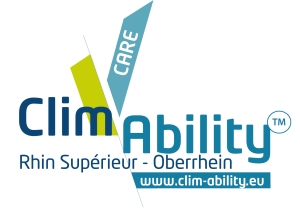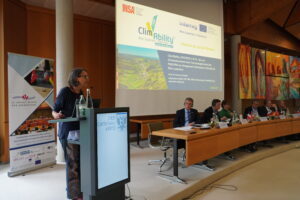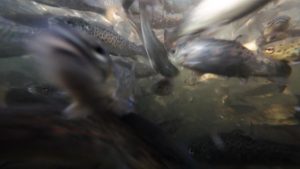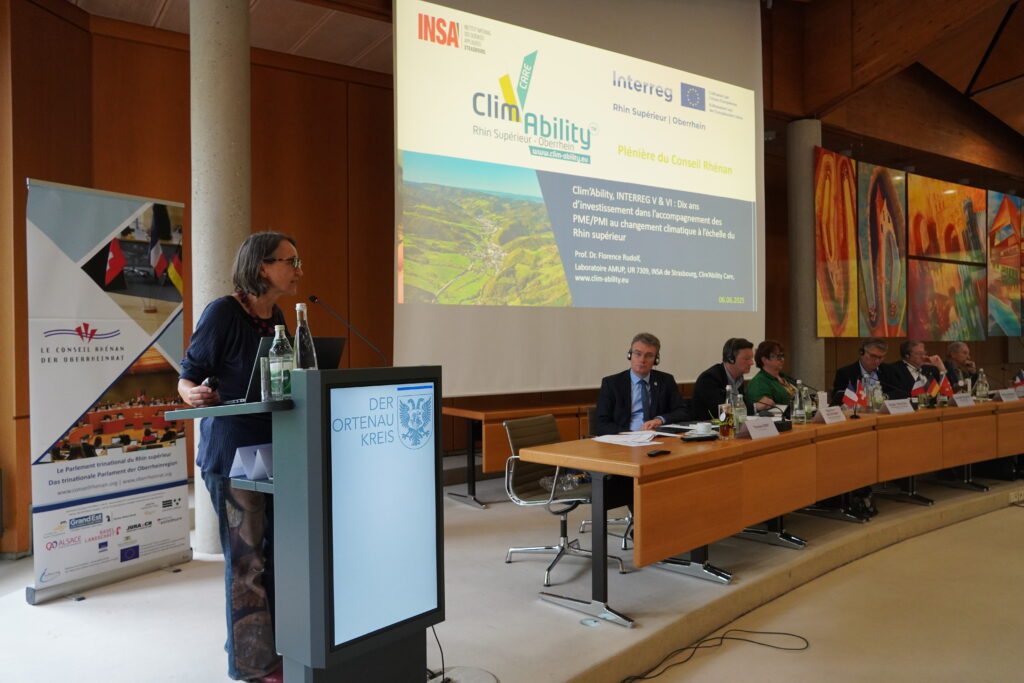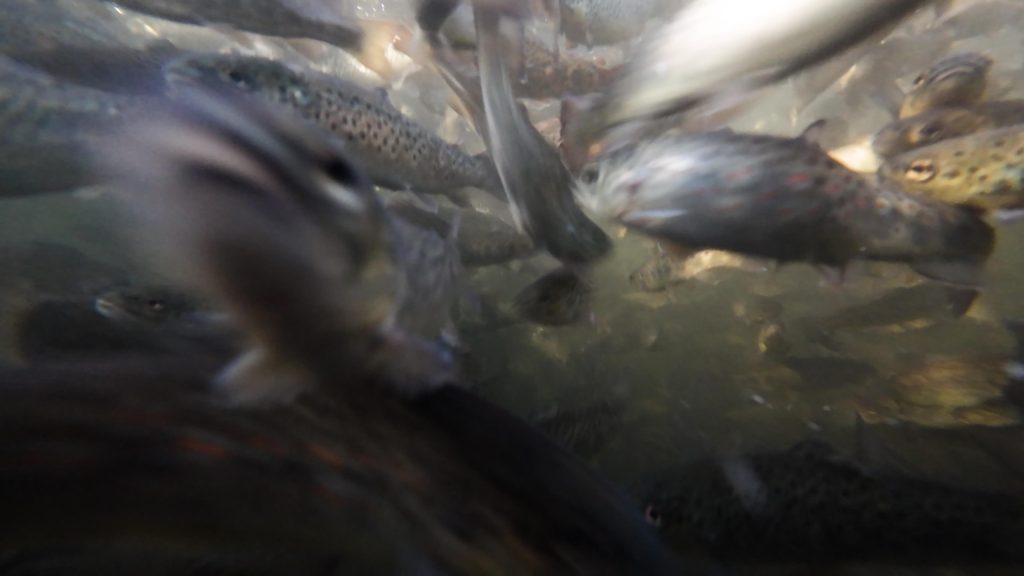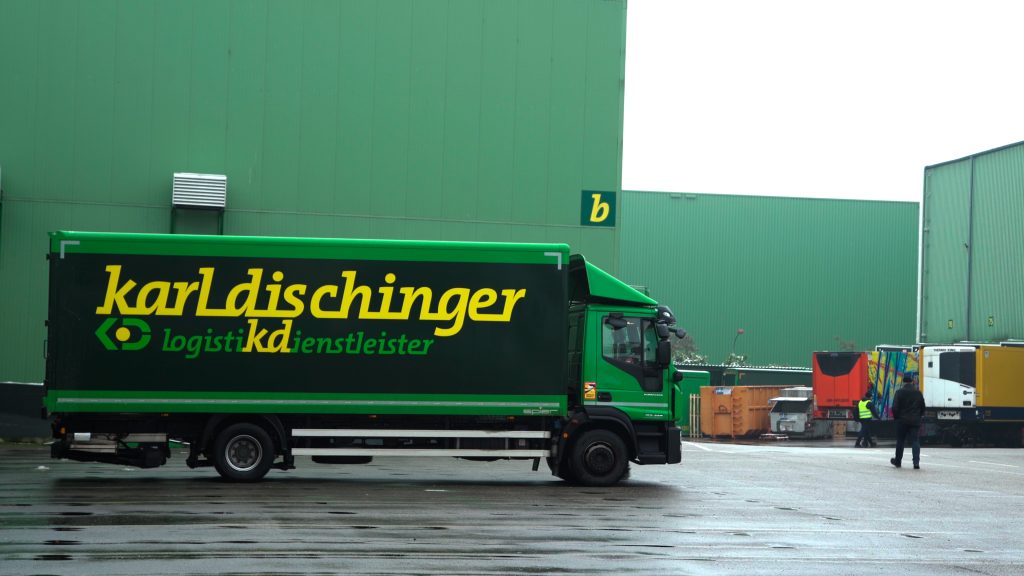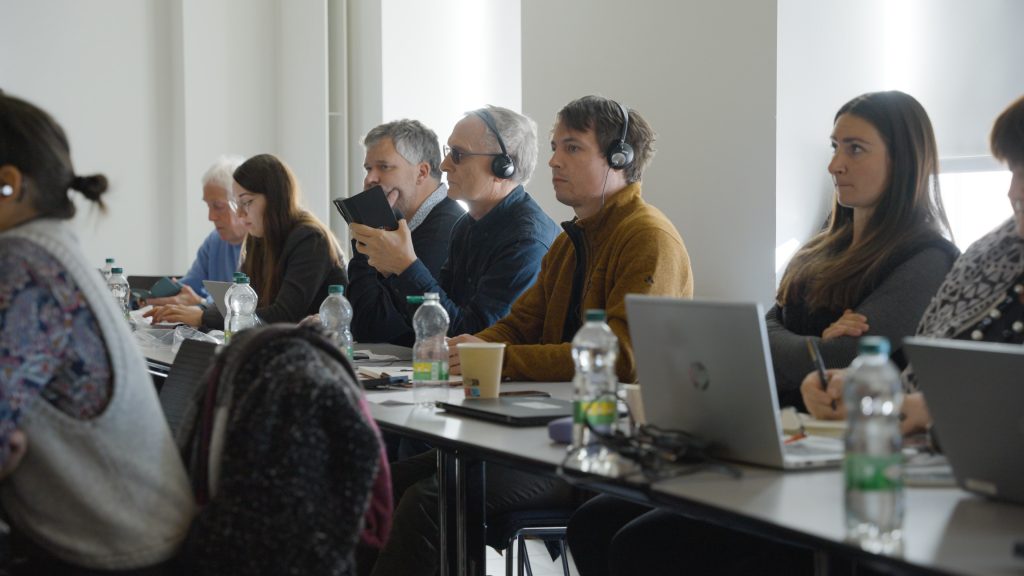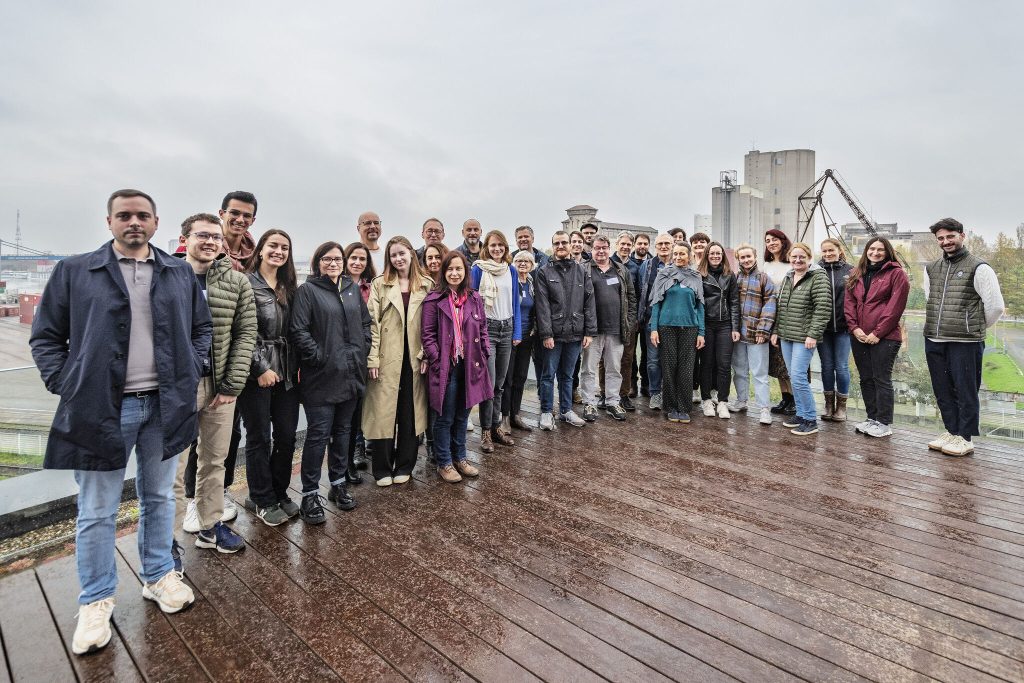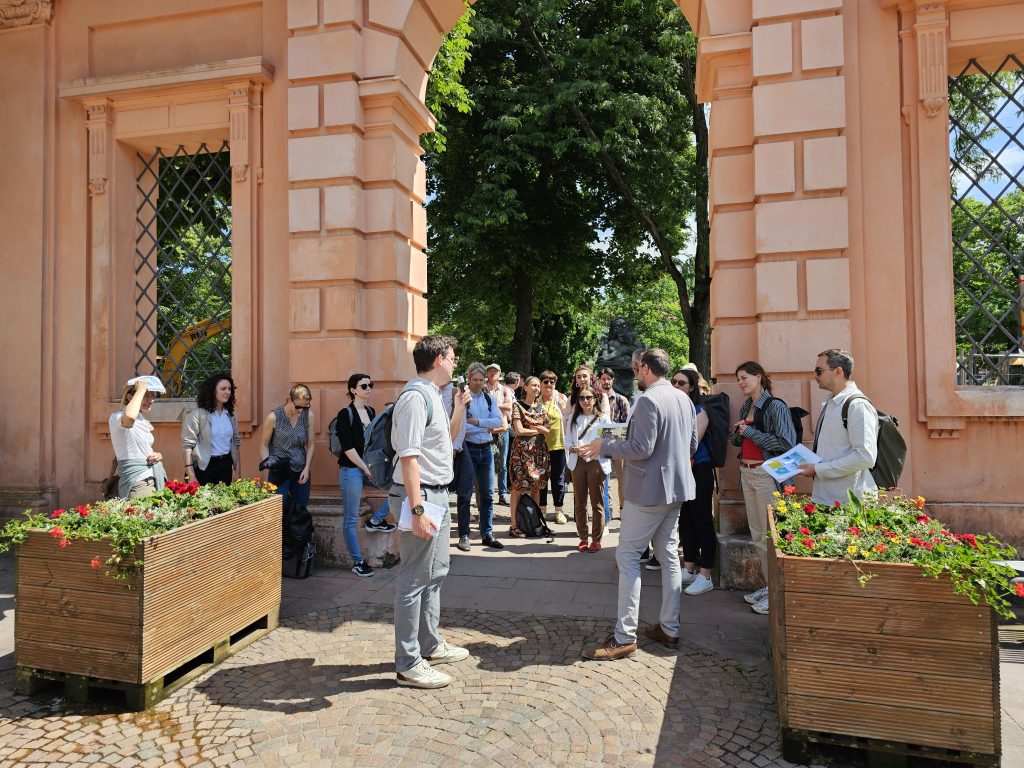A look back at the workshop visit to the Syndicat des Eaux et de l’Assainissement Alsace-Moselle (SDEA): Sharing best practices on ecological restoration and adaptation to climate change
On June 28th, 2022, the Clim’Ability Design project organized an event at the Espace Européen de l’Entreprise, located in Schiltigheim and which faces numerous climate challenges. In this context, a workshop organized by HYDREOS at the Syndicat des Eaux et de l’Assainissement Alsace-Moselle (SDEA) had the ambition to exchange on the implementation of ecological restoration actions on the site of companies, and more broadly communities and organizations facing the effects of climate change in the Upper Rhine.
Crossed scientific and economic views between Germany, France and Switzerland
Following a short introduction and presentation of the Clim’Ability Design project by Clémence Pierre, Project Manager at HYDREOS, the workshop started with a presentation by Amandine Amat, Project Manager “Climate Change and Water” at the CCI Alsace Eurométropole. An exhibition of the impacts of climate change in the Upper Rhine region, using climate projections, highlighted the intensification and increase in the frequency of extreme weather events. In response, Amandine Amat demonstrated that nature-based solutions, or ecological restoration actions, can reduce the vulnerability of sites to these events, such as heat waves or floods, while promoting the return of life on urbanized or industrial sites. Thus, these solutions represent a major lever for the adaptation of companies and other organizations to the effects of climate change, for example through the implementation of integrated stormwater management, the maximization of green spaces, the infiltration of rainwater, and the establishment of housing for wildlife.
In a second step, Tina Haisch, Professor and Doctor at the University of Applied Sciences and Arts of Northwestern Switzerland (FHNW), presented in a pre-recorded speech the transformation sites of the port area of Birsfelden and the industrial area of Klybeq. On these sites, where the Clim’Ability Design project is working in consultation with numerous actors and stakeholders, the “Living Energy Laboratory” project is about to begin. The challenge will be to imagine new strategies and concrete solutions for adapting to the effects of climate change, particularly with regard to the energy issue.
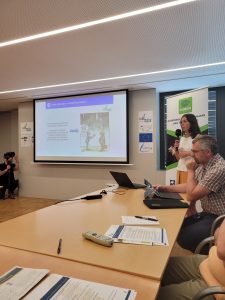
An exchange of best practices and feedback on ecological restoration actions
First, Franck Huffschmitt, Director of Sustainable Watershed Management of the SDEA, presented the main missions of this second largest water union in France, namely water supply, sanitation and, more recently, the GEMAPI (Management of aquatic environments and flood prevention). Presenting the issues related to the consideration of biodiversity and the greening of sites, Franck Huffschmitt then spoke about the extension and modernization work of the SDEA, located within the European Enterprise Space, between 2013 and 2016. These works were directly in line with an HQE (High Environmental Quality) approach, thus calling on expertise related to sustainable development and energy transition issues.
The numerous guidelines of the project were presented, such as rainwater management, the installation of beehives, valleys and green roofs, the creation of biodiversity spaces (hedges, fruits), the installation of BSO blinds and a passive cooling system, the doubling of the available surfaces without increasing energy consumption, and finally the creation of a bicycle parking area in parallel with an electric vehicle charging station. Thus, this project is directly in line with the green and blue network of the city of Schiltigheim. The next step in the greening of the SDEA is a project currently underway with a landscape gardener, with a view to greening the façade of the building. This intervention was thus the opportunity, before the visit of the SDEA site, to realize the extent of the transformations carried out, and the positive ecological repercussions.
On the more specific topic of rainwater management, Franck Huffschmitt reminded the audience it is a low-cost strategy which brings nature back into the city, insisting on its positive impact in terms of lowering the risk of flooding and reducing pollution of the natural environment. The main rainwater management structures implemented by the SDEA were presented, such as swales, vegetated roofs, drainage trenches, reservoir pavements, infiltration wells or landscaped basins. Finally, the importance of the connection to the sewer system was recalled, essential in order to separate stormwater from the “classic” water network. Currently, the SDEA is conducting biodiversity and desiltation studies on ten of its sites throughout the territory.
On another more specific theme, about reducing light pollution, Jean-Michel Lazou, referent for the departments of Bas-Rhin and Haut-Rhin within the National Association for the Protection of the Sky and the Night Environment (ANPCEN), spoke. After a presentation of the work of this association created in 1999, several major reasons to reduce light pollution were exposed, between the importance of the night as a habitat for biodiversity and more specifically living beings, the financial and environmental cost induced by the over-consumption of energy or the regulations and laws relating to these issues, starting with that of December 27th, 2018. Jean-Michel Lazou concluded his presentation with a series of concrete recommendations for the reduction of light pollution, including the reduction of the duration of lighting in relation to real lighting needs, the orientation of lighting, the elimination of lights with a blue component or the awareness and support of users.
An opening on Clim’Ability Design tools as well as on the UHA-SDEA collaboration on the issue of flooding
In conclusion, Gaël Bohnert, Ph.D. student, and Brice Martin, Professor and Doctor, from the University of Haute-Alsace, spoke about their work. First, Gaël Bohnert presented the Climate Inspector in a very concrete way, allowing to obtain climate projections as well as adaptation solutions proposals, as well as the Clim’Ability Diag, allowing companies to self-diagnose according to the stages of their process and the climate stress factor. The participative database ORION (Regional Observatory of Flood Risks) was also presented, which allowed to make the transition with the intervention of Brice Martin on the issue of floods, and in particular on the collaborative work conducted by the SDEA and the University of Haute-Alsace, the latter in the framework of the Clim’Ability Design project. In addition to the observation of a lack of knowledge of flood risks in the Upper Rhine, for example highlighted during the floods of July 2021 in Germany, the collaboration between these actors is based on the contribution of a theoretical vision by the CRESAT laboratory of the University of Upper Alsace and the contribution of an operational vision by the SDEA. Thus, the stake of this collaboration is to share knowledge relating to the question of floods, with a view to increasing the awareness of the inhabitants and companies of the Upper Rhine.
The presentations were followed by a guided tour of the SDEA by Pascal Mellier, SDEA’s Deputy Director General for Territories, and in particular of the green spaces set up on the site. This visit was the occasion of numerous exchanges between the 25 participants, speakers and partners of the Clim’Ability Design project.
Consult the report and the replay of this event
► Click here to download the report of the event as a PDF.
► Click here or on the video below to watch the workshop replay [in French].
© C. Pierre, Suprahead Studio, J. Hacker
This event was organized within the framework of the Interreg Upper Rhine project Clim’Ability Design, co-financed by the European Union through the European Regional Development Fund under the INTERREG V Upper Rhine program.

